Normal head shapes at 3-9 months old
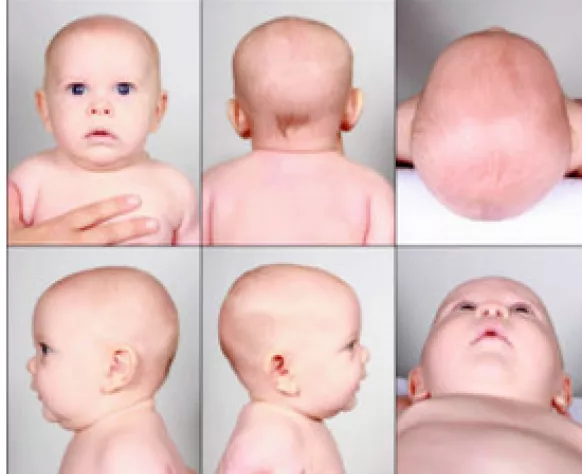
Normal head shape — 3 months old
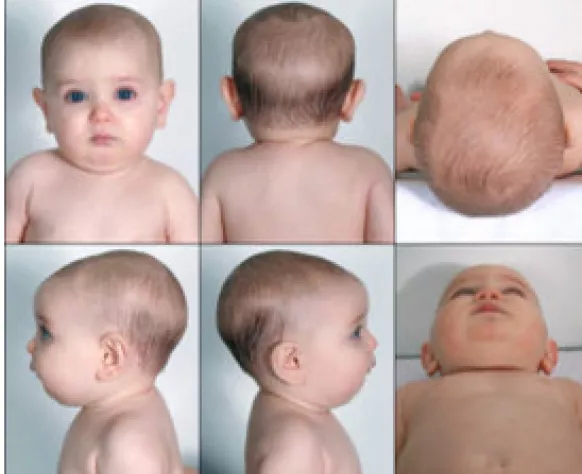
Normal head shape — 6 months old
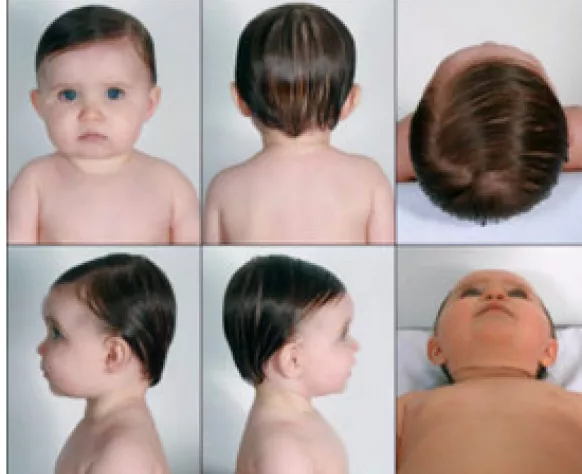
Normal head shape — 9 months old
To better understand irregularities, let's start with what a typical baby head shape looks like. Here are the general guidelines:

Normal head shape — 3 months old

Normal head shape — 6 months old

Normal head shape — 9 months old
Place your baby in yours or someone else's lap so you have a good view of the top of their head. You may notice flatness on either one side, or the entire back of the head. The head is typically 1/3 longer than it is wide, and if you were to draw a line down the middle, the left half should look the same as the right half.

Normally, the back of the head is curved and both sides of the head will match both in symmetry and proportion. So for this step, we'll want to focus on the back of the head, and the forehead.
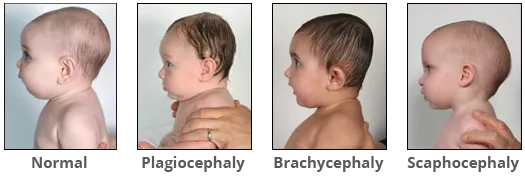
Typically, asymmetry of the facial features is related to plagiocephaly or is a component of plagiocephaly. The ear alignment test or the Argenta Method is a great way to check for misalignment from a visual standpoint.
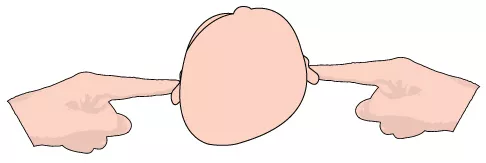
However, it's important to keep in mind that flat spots won't always cause asymmetry in the facial features. Therefore the ear alignment test is usually a good indicator for plagiocephaly, but may not always paint the full picture.
Since you see your baby’s face every day, it can be easy to miss gradual changes to their facial features. Place your baby in front of a mirror, this will make it easier to see asymmetries.
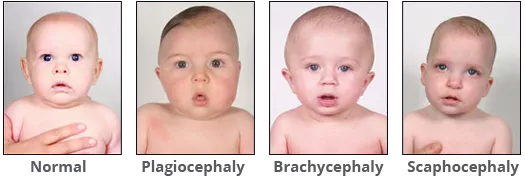
For the final step, lay your baby flat on his or her back with their face looking directly up toward the ceiling and look up at the face from the chin. From here, we can check for any angling in the forehead. This angle also offers a good opportunity to see if one side of the forehead is more prominent with angling to the other side.
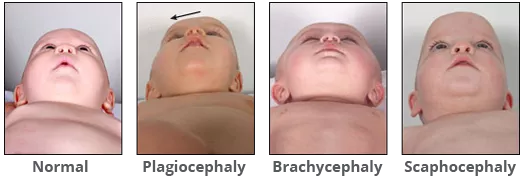
Our research has not shown self-correction in most cases. Remember that an external force was present to cause the deformity, therefore an external force must also be present to correct it. Once your baby is sitting up and moving about, the head will continue to get bigger, but the shape will remain the same. For children less than 4 months old, supervised tummy time and repositioning techniques can sometimes be enough to correct an abnormal head shape.
Both age and severity of the head shape are two factors that have a significant impact when treating flat spots.
Repositioning at 0-3 months of age
Since the head is very soft at a young age and grows rapidly, an uneven head shape can be common. Generally, for younger babies experts will recommend that parents use these techniques to help alleviate pressure to the head:
Unlike other conditions, plagiocephaly can only be treated for a short window of time. The skull hardens and brain growth typically slows by age 2, at which point the shape of the head is mostly set for life.
While repositioning can sometimes correct mild flatness in babies up to 4 months old, research shows that moderate to severe plagiocephaly is unlikely to self-correct.
The truth is that there is no right or wrong answer to when parent's should be concerned about flat spots.
Consulting with a healthcare professional is the best course of action to get your questions answered.
We proudly offer no cost evaluation handled by our highly trained clinicians who see hundreds of plagiocephaly patients each year.
Yes, they're 100% no-cost and require no commitment to treatment whatsoever!
Please note that this assessment is not meant to replace the diagnosis of a medical professional. If you’re concerned about your baby’s head shape, you can no cost evaluation at the clinic location nearest you.
While these at-home assessments can be a good indicator of plagiocephaly, cases can range from mild to moderate and severe. A physician will recommend molding helmet therapy if the condition is severe enough where mild intervention will not correct the issue.
The good news is that mild cases of plagiocephaly can often resolve over time with proper repositioning techniques and supervised tummy time. These physical therapy activities help or encourage the baby to alter their head position frequently so even growth occurs.
Determining the correct course of treatment for your baby will require a proper diagnosis from a medical doctor or plagiocephaly specialist.